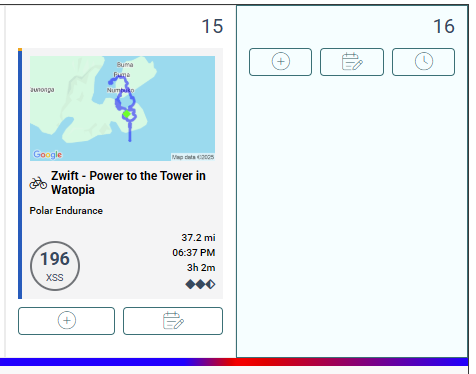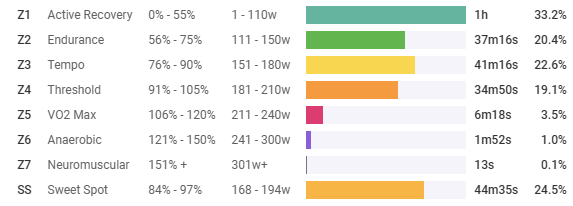I continue to test Xert… As much as I like the idea, I feel that implementations isn’t that great ![]()
- Web site on desktop requires strong refresh to make sure current data is shown… Forgetting to refresh means that you will be basing your decisions on stale data.
- No mobile app and no PWA app - mobile site would be useful if not for its constant glitches - I caught it moving freshness feedback slider on its own, without any interaction!
- Planner’s bar which shows freshness have a life of its own - it can show one status for the next day in the evening of the pervious day and then completely change its mind (usually towards blue) next morning - this makes it impossible to plan ahead
- The attempt to overtraining continue on 3rd week - VO2max workouts two days in a row? Sure - Riders on the Storm - 90 and Killing Me Slowly - 90 - but why?
- “Rest” day - since when Z3/Tempo workout is considered “rest” or even Endurance??
Example - here I am, quite tired of previous days and doing Elevation Evaluation in Zwift yesterday - good climb in Z4/Z5 - it tries to suggest me another hard VO2 max workout (like HOP - 140% and 75%), so I try to move freshness feedback slider all the way to the left.
The only way it would give me “recovery” ride (ex. After Midnight - 30 still with some Tempo intervals) if I set it to -10. Anything else and it wants me to do another Z3/Tempo workout (this is not Z2/Endurance!):
I do not see any logic in trying to overtrain when I really just asked to maintain my current level of fitness.
I have surplus and did several days of loaded workouts already and it still suggest workouts with 4.5 difficulty?
This just seems like an algorithm behind XATA is targeted at 20 year old athletes.
I don’t think it can guide training properly - it does NOT measure many things like:
- No heart rate analysis - completely ignores this training load component
- No sleep or HRV analysis - which means it can’t judge how much rest I really need
- Planner’s freshness bar algorithm seems to not consider that humans rest more during sleep but then accumulate more stress during the day - it just does some mathematical decay over 24 hours…
This is my 3rd attempt to use Xert over last 3 years and I am disappointed again.
The math and ideas behind it are probably great, but if the industry does not want to pick them up (regardless if they are patented or not) - there is no real value behind them.
Maybe next year? When “magic buckets” would work for indoor training in Zwift or TPV without Garmin device? This should be relatively easy to do now, since most Wahoo trainers support up to 3 BLE connections… I’ll keep my hopes high.









